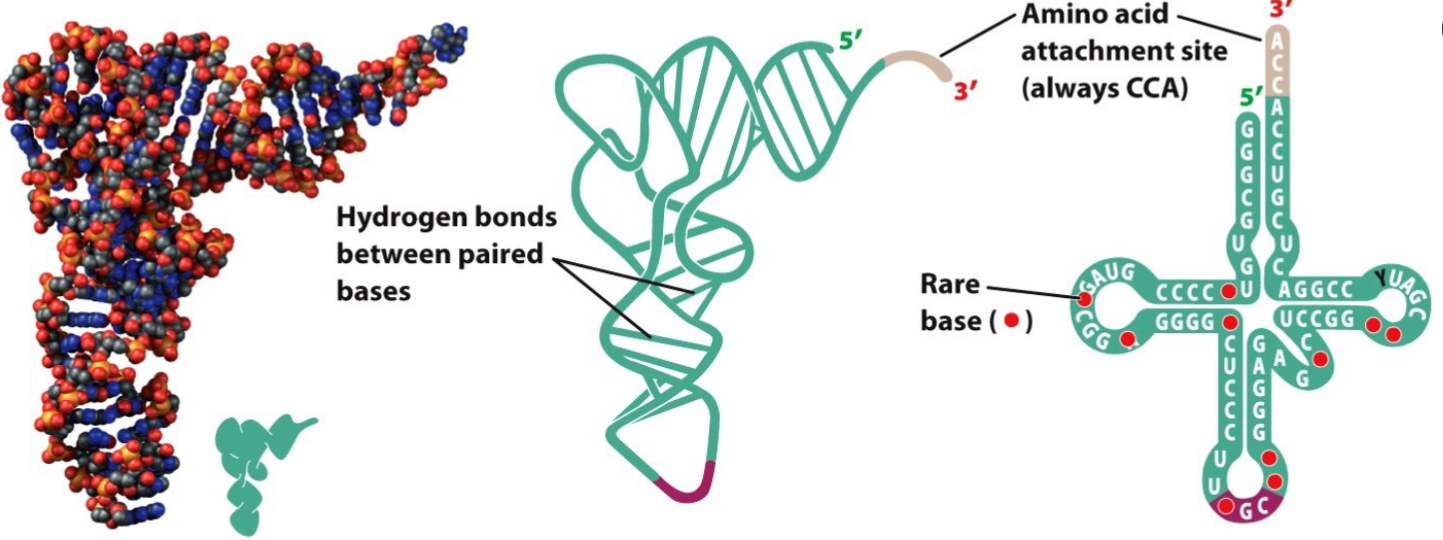Lecture 7 - Finishing The Genetic Code & How to Make Proteins
Recall from last time:
TL;DR
- We saw the use of hRNA, or the pre-mRNA
- It then got processed into a matrure mRNA strand.
- We then left off talking about, during translation, that uses rRNA and tRNA
The Genetic Code (The Language)
The information to encode a single amino acid is carried in a sequence of three nucleotides The Genetic Code. This is because we need 20 amino acids, and thus since we have combinations of 4 nucleotides we need:
Hence why we use 3 nucleotides. 3 nucleotides gives
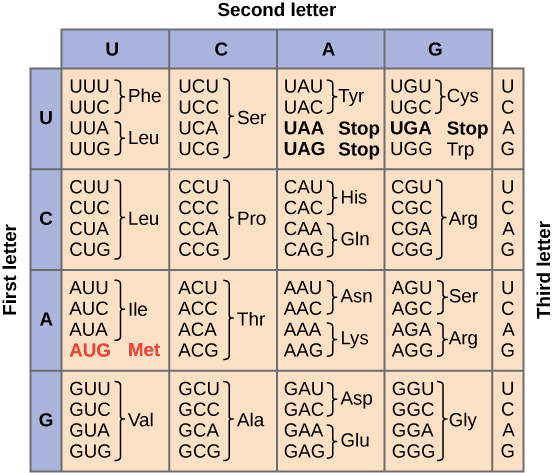
Each triplet in the DNA is called a codon in the RNA. That's why, in the table above, there's the RNA 'U's instead of T's.
The code is degenerate.
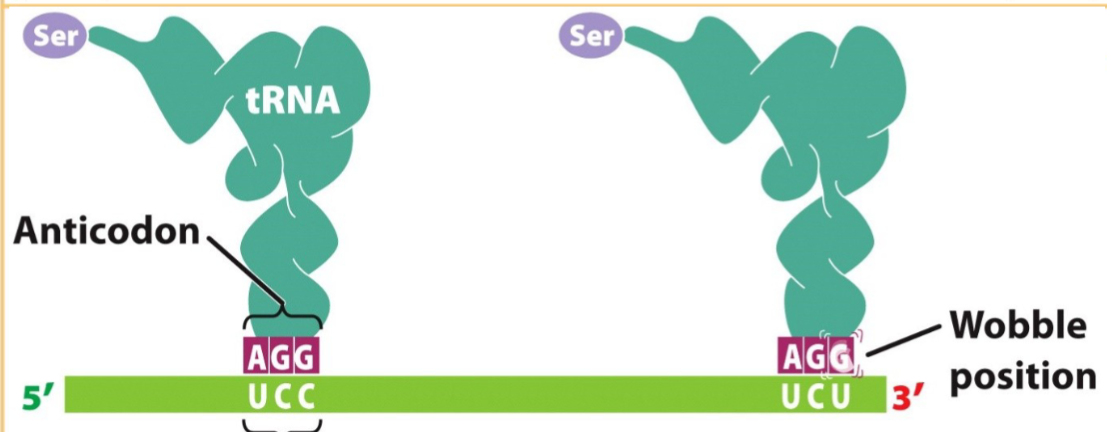
If the codon (part in green) matches, then the stuff that comes flying in periodically will bind with the tRNA. The "wobble position" comes from the fact that, with a mismatch on the last position, the tRNA will literally 'wobble' in contact since it has less of a forcefull connection with the codon.
Some codons are STOP codons. If one of these get seen, then the ribosome essentially kills the made amino acid. For example AUG is the start codon. In contrast, UAA, UAG, UGA are the stop codons (see the table above).
Translation
The nucleic acid code in a mature mRNA is translated into amino acids to synthesize polypeptides. In eukaryotes, mature mRNA is exported out of the nucleus into the cytoplasm where it is translated by ribosomes. It starts from the 5' end of the mRNA.
Everything gets recycled in the process except for the produced polypeptide (ex: the mRNA may be read over and over again until it's been read enough that it's unreadable).
What is the:
- mRNA
- Ribosome
- Polypeptide
- 3', 5' ends
in the photo above?
Look at the ribosomal reading above:
- E Site is the Exit Site: the site where used tRNA is jettisoned from. No amino acid just yet.
- P Site is the Peptidyl Site: site of the growing polypeptide chain
- A Site is the Aminoacyl Site: site for taking in the next amino acyl tRNA (a tRNA molecule with an amino acid on it)
We do the steps similar to our steps before, all on the anti-codon (the complement of the RNA):
- Initiation: Create the polypeptides at all E, P, and A sites
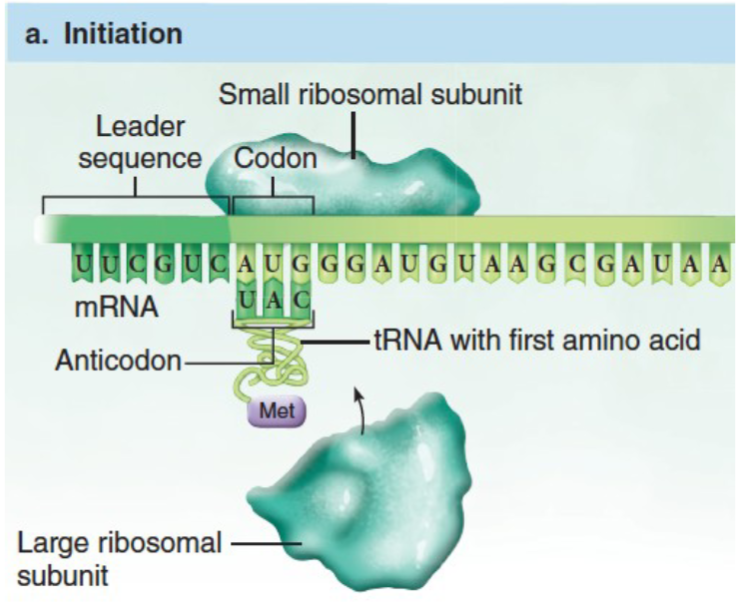
- Elongation: Put the E site polypeptide on top of the P site on. Namely, create a peptide bond to connect the two.
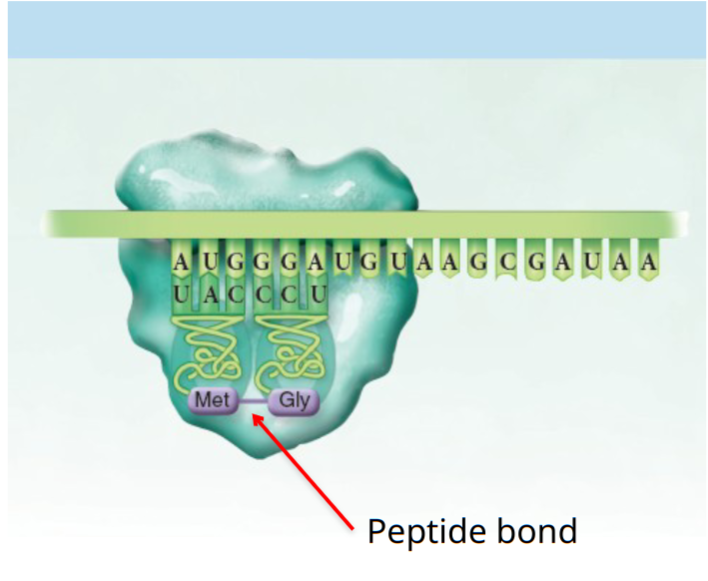
- Translocation: ribosome ratchets over one codon, jettisoning empty tRNA and accommodating another amino acyl tRNA (move the RNA 3 nucleotides over)
- Termination: elongation ceases once a STOP codon is reached; release factors bind the ribosome and the complex falls off
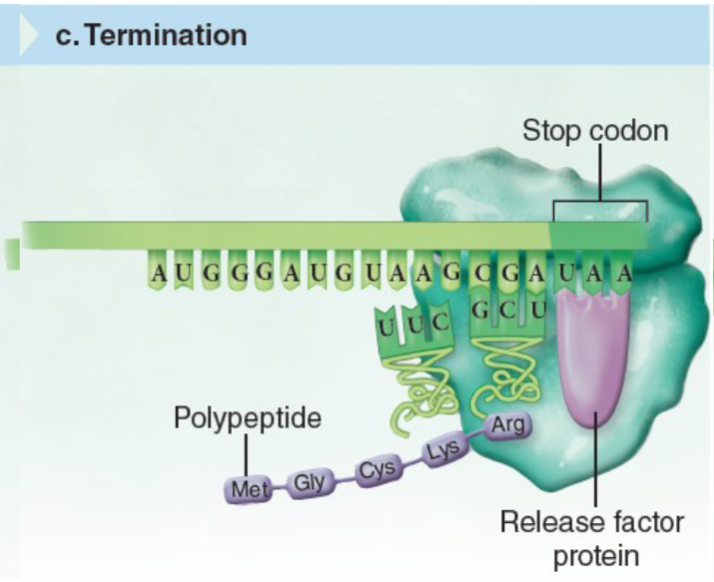
We start at (1), then do (2
The whole process including transcription then translation can be seen:
Gene Expression is Highly Regulated
The flow of information or gene expression is highly regulated; here are only 6 steps:
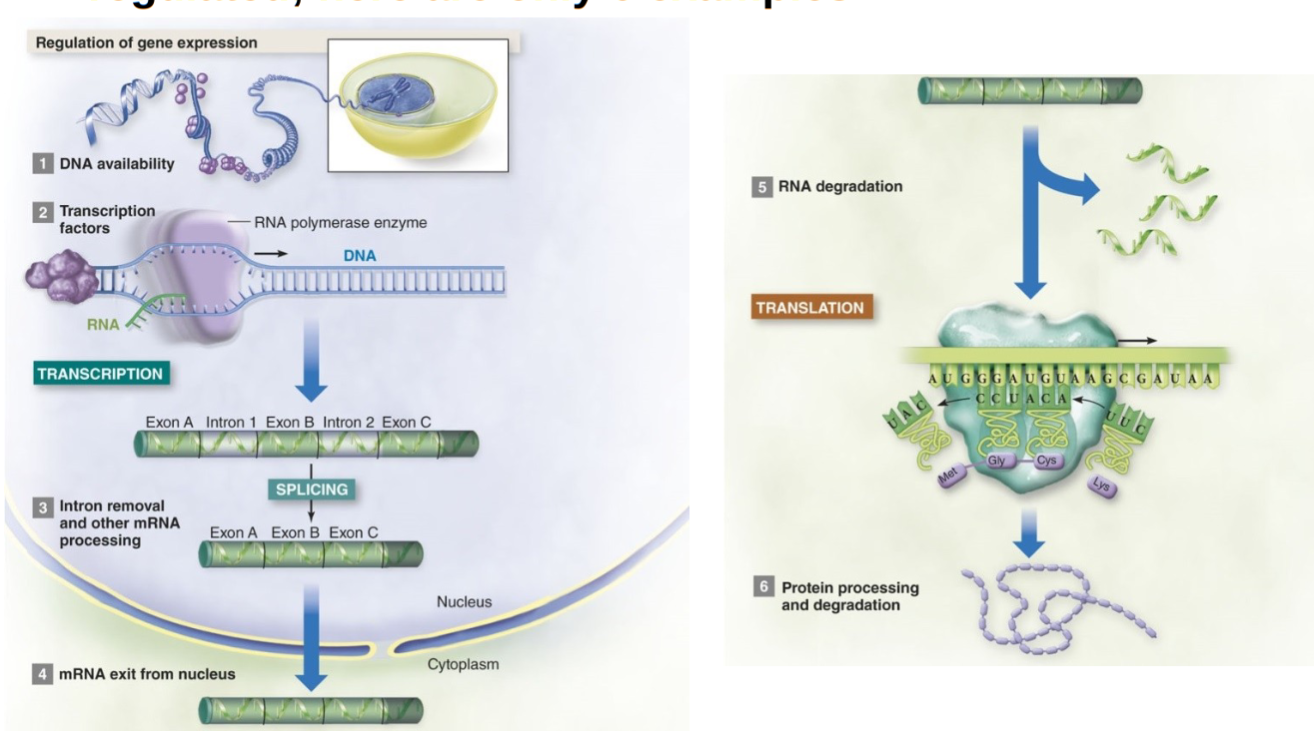
For instance, we have a lot of control of the lifespan of the mRNA or transfer of information flow, for better or worse:
- We can cut off the A 3' end of the mRNA, dramatically reducing its lifespan.
- Mutations can change DNA
Mutations Change DNA
Mutations can involve:
- substitutions
- insertions
- deletions
Nucleotide substitution mutations alter the sequence, but not the number of nucleotides in a gene. They involve one "point" or only a small number of bases.
* (Mutation here)
5' ATG GCC ACG GTT CTT CCT ATA 3'
3' TAC CGG TGC CAA GAA GGA TAT 5'
* (Mutation here)
Becomes:
* (Mutation here)
5' ATG GCC ACG GGT CTT CCT ATA 3'
3' TAC CGG TGC CCA GAA GGA TAT 5'
* (Mutation here)
Errors can happen anywhere in any of the 6 steps of DNA transcription/translation. At any time. Realize that:
- Because the 1st and 3rd bases aren't as important, mutations here are more okay
- We could have a mutation that changes to the same amino acid (ex:
TTAtoCTAgives theLeuamino acid still).
Frameshift mutations are a different mutation. They are bad. They result from the insertion or deletion of bases. Because codons are composed of three bases, inserting or deleting a single base in DNA can drastically affect mRNA translation:
THE DOG AND THE CAT ARE OUT ... (original text)
TED OGA NDT HEC ATA REO UTA ... (deletion text ('H' of THE))
THH EDO GAN DTH ECA TAR EOU T.. (insertion text ('H' on THE))
You can see in the example above that insertion or deletion garbles the whole message. In DNA the same principle applies:
- If it happens earlier in the gene, then this can affect everything down the line
You may think that deletion/insertion of three nucleotides would alleviate this issue. It does make the mutation less severe; however, because of the low probability of this happening, it's an ignorable case.
Mutations can alter polypeptide folding, causing genetic disorders like Alzheimer's Disease & cystic fibrosis (CF). CF results from defective folding of the CF transmembrane conductance regulator (CFTR) protein.
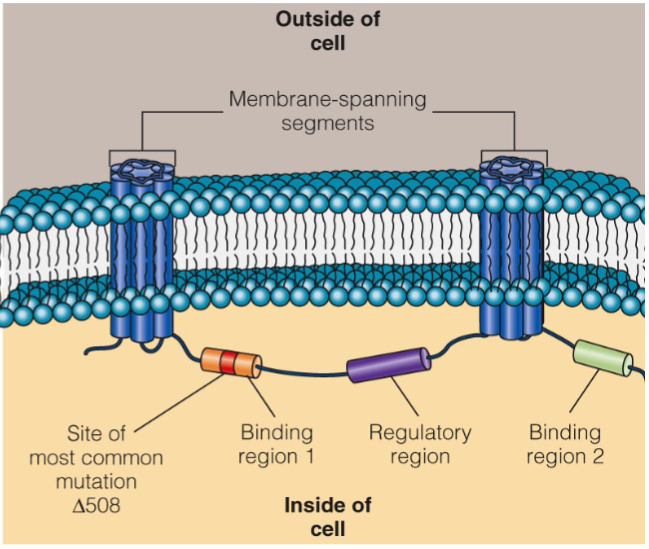
Defunct CFTR proteins removes these membrane-spanning segments (makes them less likely), making your mucus like tar. You can have a single deletion at
Something that Causes More Protein Misfolding
Prions are scary. Some proteins can refold and change their 3D shape. But there are these proteins that fold other proteins, known as chaperone proteins. Protein refolding diseases are called prion diseases. Prions are protein folded into an infectious conformation that is the cause of several disorders.
They are though to be rouge chaperones that just misfold proteins. But prions are specifically really fast at misfolding these proteins. Furthermore, the misfolding are always random, so it's nigh impossible to trace and even when traced will not be the only prion.
There are a number of prion diseases that are from this branch:
- Mad Cow Disease (BSE) creates a thinning of the brain, which creates a whole host of other issues.
- Creutzfeld-Jakob disease is the human variant of mad-cow disease. You can get it from handling or dealing with squirrels.
Prions create other prions, until the cell dies, then the prions travel to other cells. It's scary stuff!
In vCJD & BSE, the prions cause normal proteins in the body to refold into new, infectious 3D shapes that kill cells in the brain and nervous system.
